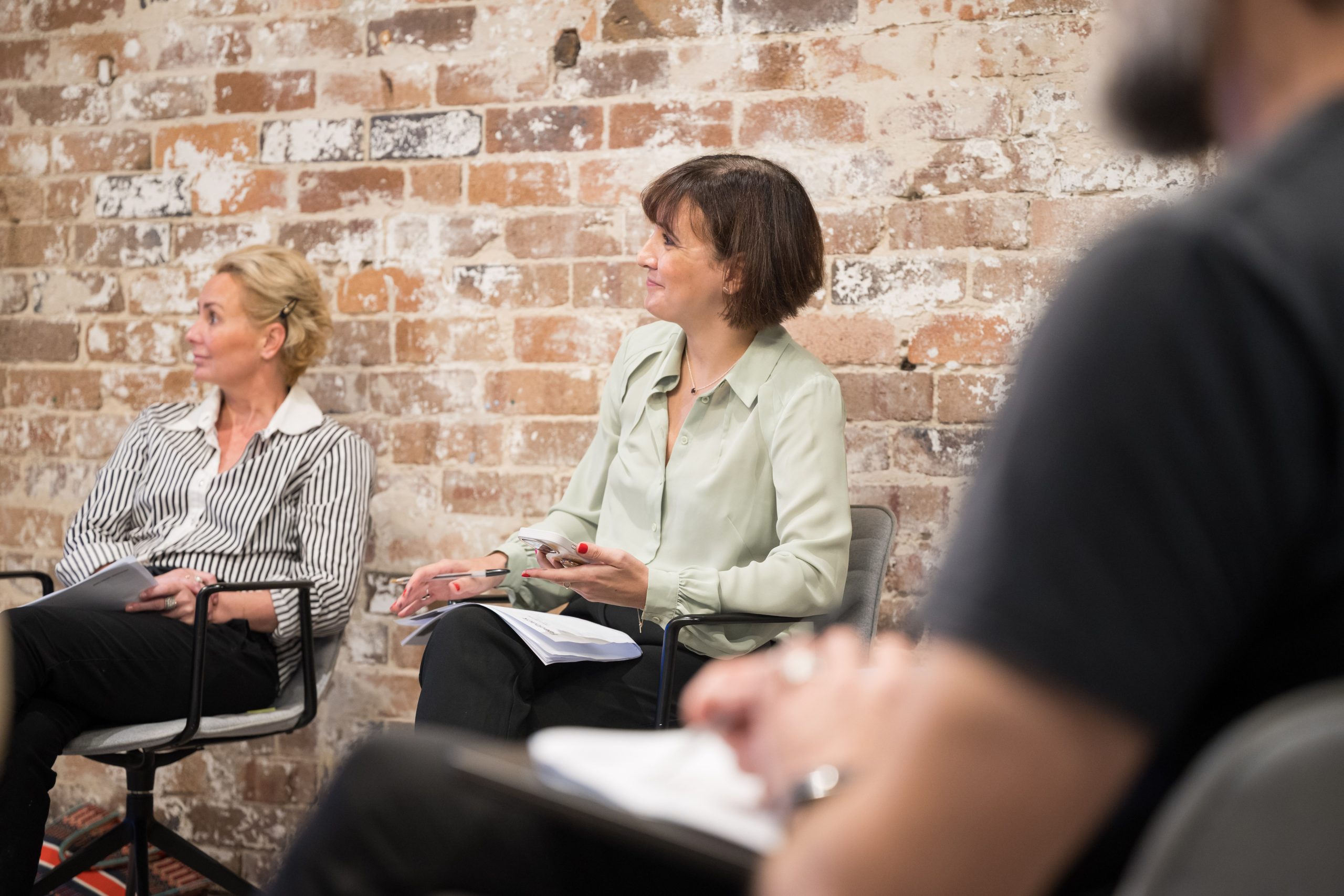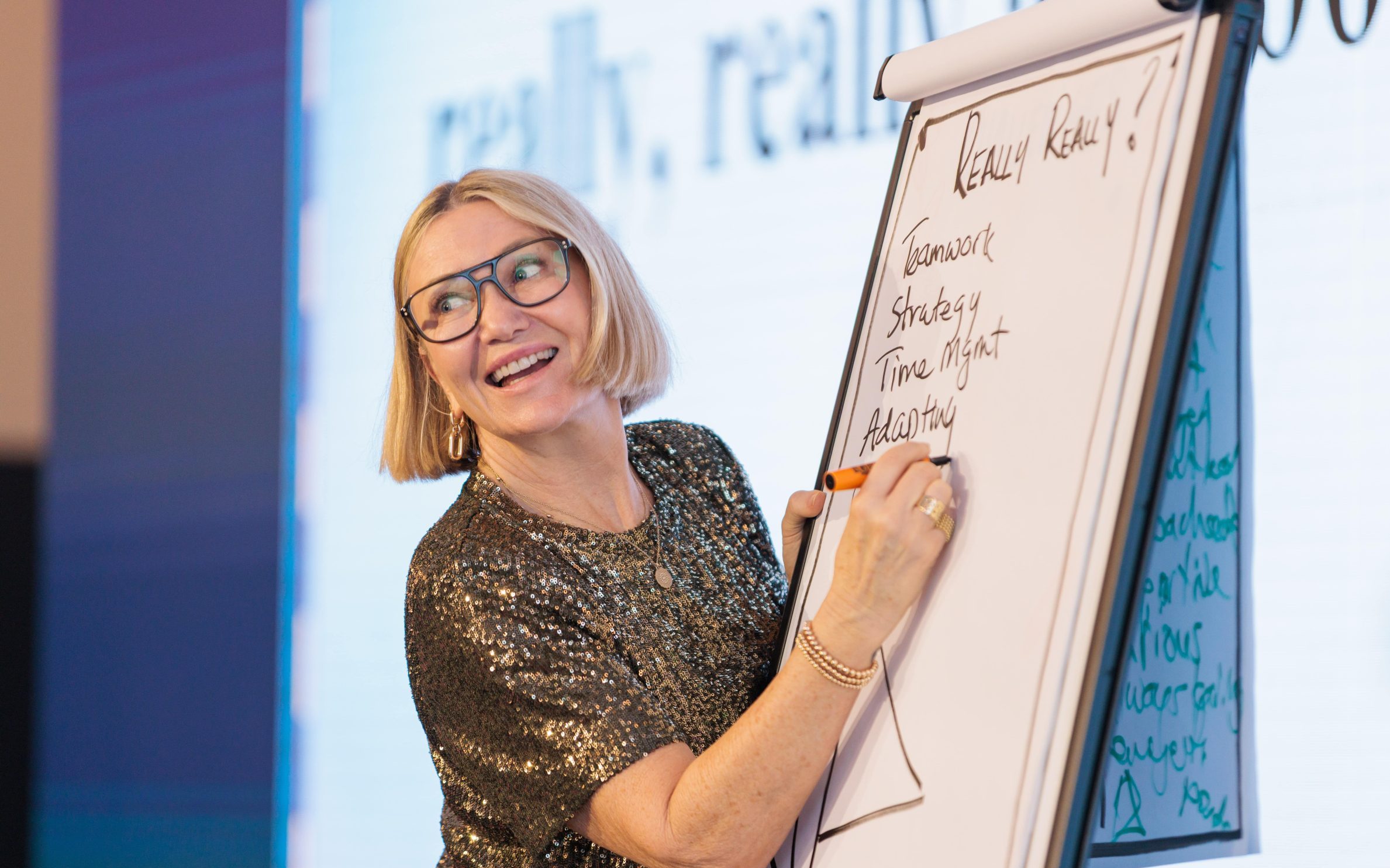We all know that critical thinking and problem-solving are core workplace and life skills, but as AI accelerates, there is a risk we will lose the human elements of these crucial skills.
At Phuel, we see the importance of these skills across every business function and level, from senior leadership to frontline teams. However, opportunities to build and practise them organically are waning.
In this article, we explore strategies, toolkits, critical thinking models and immersive learning experiences to enhance this essential business and life skill for organisations that want to unlock potential and gain a competitive advantage.
What are critical thinking skills, and why are they important in today’s workplace?
Put simply, critical thinking refers to the ability to evaluate a current or emerging scenario and determine what is a fact, what is an observation and what is an assumption to draw rational conclusions. It equips your people to navigate uncertainty and change – analysing situations and synthesising the information gathered to make informed decisions.
In a way, it’s an in-built detective skill that requires logic, curiosity and agility. It’s about asking yourself deep questions and adapting when the answers contradict long-held beliefs, biases or common assumptions.
It’s necessary today more than ever as we grapple with unimaginable quantities of data. We can measure almost anything, and with so many data points available, we must retain the human skills to analyse, refine and make informed choices to get to creative, viable and sustainable solutions.
It may sound simple, but we all know that we carry many conscious and unconscious biases and beliefs, which can get in the way. In many cases, the result is that we follow the route we are most comfortable with, and this tends to be the same path we’ve always tread. In a constantly evolving world, this can be a significant disadvantage for individuals, teams and organisations.
And as technology advances, the challenge may only be growing.
How does technology impact critical thinking skills?
The average person is called upon to make around 33,000–35,000 decisions a day. From what time we wake up to complex workplace decisions and intractable problems, it’s easy to see why we are looking to technology to relieve some of the burden.
And in many cases, it has done an incredible job. Take the widespread use of GPS mapping. For those old enough to remember life pre-GPS, getting to a meeting point, appointment or new work location could be a significant challenge. We traversed cities using large books of maps that weren’t in sequential order for our journey and decided on the best route. If you went wrong, determining where you made the mistake was tricky, so you had to recalibrate and navigate from your new location, starting the process all over again. We had to apply critical thinking and problem-solving skills to get from A to B on a daily basis.
Today, our devices find our current location. We plug in our destination and it takes care of the rest, promptly alerting us if we go off-course. This, of course, saves our energy for more complex decisions and scenarios.
But the flip side is that we no longer need to apply critical thinking skills or problem-solving skills to basic, everyday tasks like navigation. And these were organic opportunities to build, practise and refine these skills – often under pressure to be on time.
As this recent Microsoft report highlights, AI is impacting our ability to think critically, and it’s an increasing risk for organisations, particularly as younger, digital native generations enter our workforce. In many ways, it’s the paradox of automation. It makes life easier on many fronts, but there is always a trade-off.
So, can critical thinking and problem-solving skills be taught in this landscape? I believe they can. But it takes clear intent and commitment. Seeking opportunities to build and refine these skills must be on every organisation’s radar.
How can leaders encourage critical thinking and creativity in teams?
It’s important to seek both structured and everyday opportunities to build these skills. I am a big believer in reading, absorbing and always learning – and that mindset is core to both critical thinking and problem-solving skills.
There are many models out there that can help you explore how to develop critical thinking skills, and these can be a great start when thinking about how to include these skills in your capability frameworks.
But with so many models and frameworks, what are the best critical thinking models for problem-solving? In my opinion, some of the key models to consider include:
- Socratic questioning
As the name suggests, this model comes from methods used by the Ancient Greek philosopher Socrates. It involves using disciplined and deep questioning to pursue thought in many directions and uncover creative and new solutions. It is designed to get to the heart of an issue, uncover assumptions, identify challenges, analyse ideas and consciously recognise known information from the unknown to stop our biases or patterns from getting in the way.
This deep curiosity and enquiry are key to embracing constructive challenge, finding new solutions and increasing engagement and teamwork in a digital workplace. As we will explore in the next section, constructive challenge is crucial to a critical-thinking culture.
- Design thinking
Design thinking is a favourite here at Phuel because it addresses complex issues, particularly those where traditional and linear approaches are falling short. Whether you are looking to apply critical thinking to a service, product or people-based challenge, design thinking structures can help you put the end user at the heart of the solution. It is a model that embraces ideas, testing, deep thought and reflection.
It encourages deep exploration of any problem and challenges users to look beyond preconceived ideas to consider various perspectives and potential solutions. The model’s emphasis on collaboration and iteration actively builds, tests and refines critical thinking and problem-solving skills.
And it’s a great source of competitive advantage, too. Organisations that integrate design thinking into their strategic approach enhance their problem-solving capabilities and remain competitive in a digitally driven market, ultimately leading to products and services that better meet the needs of their users. If you’re interested in learning more about this powerful model, head over to Phuel’s Innovation and Design Thinking page or reach out to the Phuel team for a chat.
- Game theory
Another Phuel favourite is game theory, particularly the work of Dr Jason Fox. Game theory is a mathematical framework designed for understanding strategic interactions among rational players, but it has applications across leadership, engagement, problem-solving and critical thinking.
In his work, Dr Fox considers the workplace as a ‘game’ with rules, players, strategies and outcomes. He believes that it helps to understand motivations and behaviours within teams and to design strategy that enhances both cooperation and competition, encourages innovative thinking, inspires teams – and ultimately leads to better solutions.
I encourage you to explore Dr Fox’s work, in particular, his book ‘The Game Changer: How to Use the Science of Motivation With the Power of Game Design to Shift Behaviour, Shape Culture and Make Clever Happen” if you want more unique problem-solving approaches. You can also contact the Phuel team to discuss how game theory can help you build core skills and grow your business.
And while these models are an important piece of the puzzle, creating a culture that supports them is equally important.
How can leaders foster a culture of critical thinking in a digital workplace?
Building a culture of critical thinking in today’s digital world involves deliberate, intentional and proactive commitment at all levels. A culture of critical thinking is built on a foundation of curiosity, where open enquiry and questioning are encouraged, and ideas are explored on their merit, not their source.
In this environment, leadership teams model critical thinking behaviours in their own decision-making and problem-solving processes. They actively encourage team members to take a step back, reflect and analyse scenarios rather than making reactionary decisions.
A culture that supports critical thinking is one that actively encourages and welcomes differing viewpoints as constructive challenge.
Constructive challenge is all about questioning ideas and decisions in a way that is focused on improvement and positive outcomes. It’s not about criticism; it’s about growth and the evolution of ideas. It’s about actively fostering dialogue between team members, where divergent opinions are seen as an opportunity to adapt and improve an idea, process, product or service. It’s important to note that for this to be effective, you need to have clear feedback frameworks in place, both for giving feedback and receiving it.
It’s also important to provide structured opportunities to develop critical thinking and problem-solving skills. Education, curiosity and a commitment to learning play pivotal roles. Learning experiences designed to actively enhance problem-solving, analytical skills and critical thinking are key to creating a culture that understands the importance of these skills and nurtures them.
How does experiential learning help to build critical thinking and problem-solving skills?
Experiential learning is a powerful approach that immerses learners in direct experiences and focused reflection. It encourages participants to engage actively with knowledge, which significantly enhances critical thinking and problem-solving skills. By participating in hands-on activities, learners encounter real-world challenges and complexities firsthand, which requires them to use both analytical and creative thinking to navigate these situations.
In addition, the role of reflection is crucial. After engaging in an activity, participants reflect on their experience, explore how it connects to theoretical knowledge, and consider how what they’ve learned can be applied to other contexts. This process is vital for developing a deeper understanding and versatility in thinking strategies.
Experiential learning also tends to be collaborative, involving group projects or teamwork. This collective aspect of learning allows individuals to confront diverse perspectives and, in the process, hone their ability to evaluate different viewpoints and arrange these into coherent, effective solutions.
Take Redline Racing, the critical thinking simulation. This high-octane racing adventure engages participants in a fun team-building activity on the surface, but it’s so much more than that.
Participants must balance strategic decision-making with forward planning, reflecting real-world business hurdles where adaptability and speed are essential. The simulation encourages a ‘play to win’ mindset, emphasising the importance of influence and shared vision to foster leadership and collaboration.
As teams navigate the challenges, they learn the value of adaptability and innovative problem-solving under pressure. They must think critically, identifying and overcoming emerging challenges and roadblocks along the way.
It’s designed to simulate the pressures of the business environment, preparing participants to face change confidently. By pushing teams to rapidly adapt strategies and collaborate, the simulation hones critical thinking and strategic decision-making skills, making it a powerful tool for developing agility and resilience in the face of challenges.
So, in summary, how can you enhance critical thinking skills in your business?
Critical thinking and problem-solving skills are core for every business, and the key lies in actively and intentionally building them. It’s a marathon, not a sprint, that requires a long-term commitment.
Here are my quick tips to get started.
- Question everything: Encourage a climate where asking questions is not only accepted – it’s expected.
- Balance technology with human skill: Just because AI can do almost everything, it doesn’t mean it should.
- Reflect on your own processes as a leader: Are you mirroring the mindsets and behaviours you want to see?
- Help team members develop these skills in live scenarios: Actively encourage team members to step back, reflect and analyse challenges.
- Explore models and strategies: Socratic thinking, design thinking and game theory can provide great foundational frameworks.
- Invest in experiential learning: Simulations like Redline Racing help your team to build, refine and practise critical thinking and decision-making under pressure.





